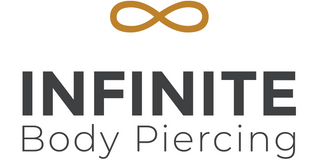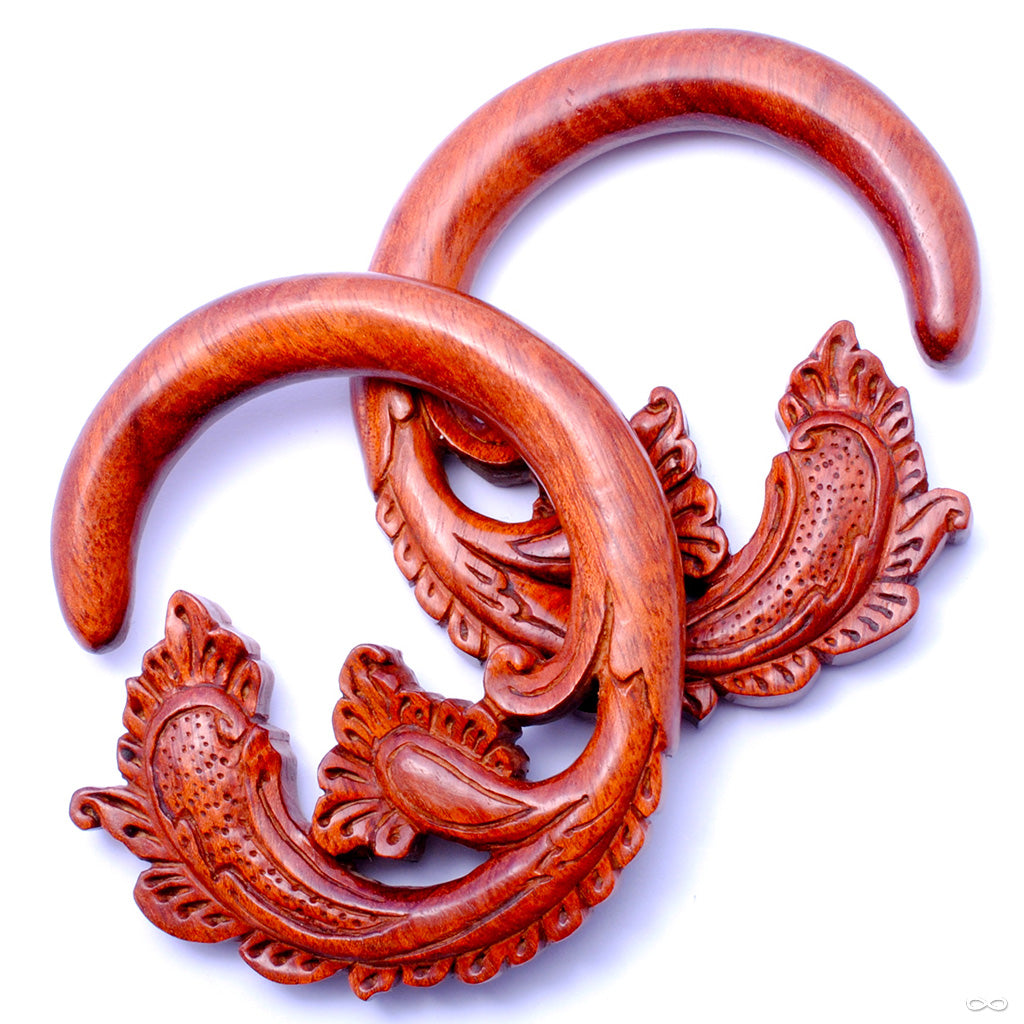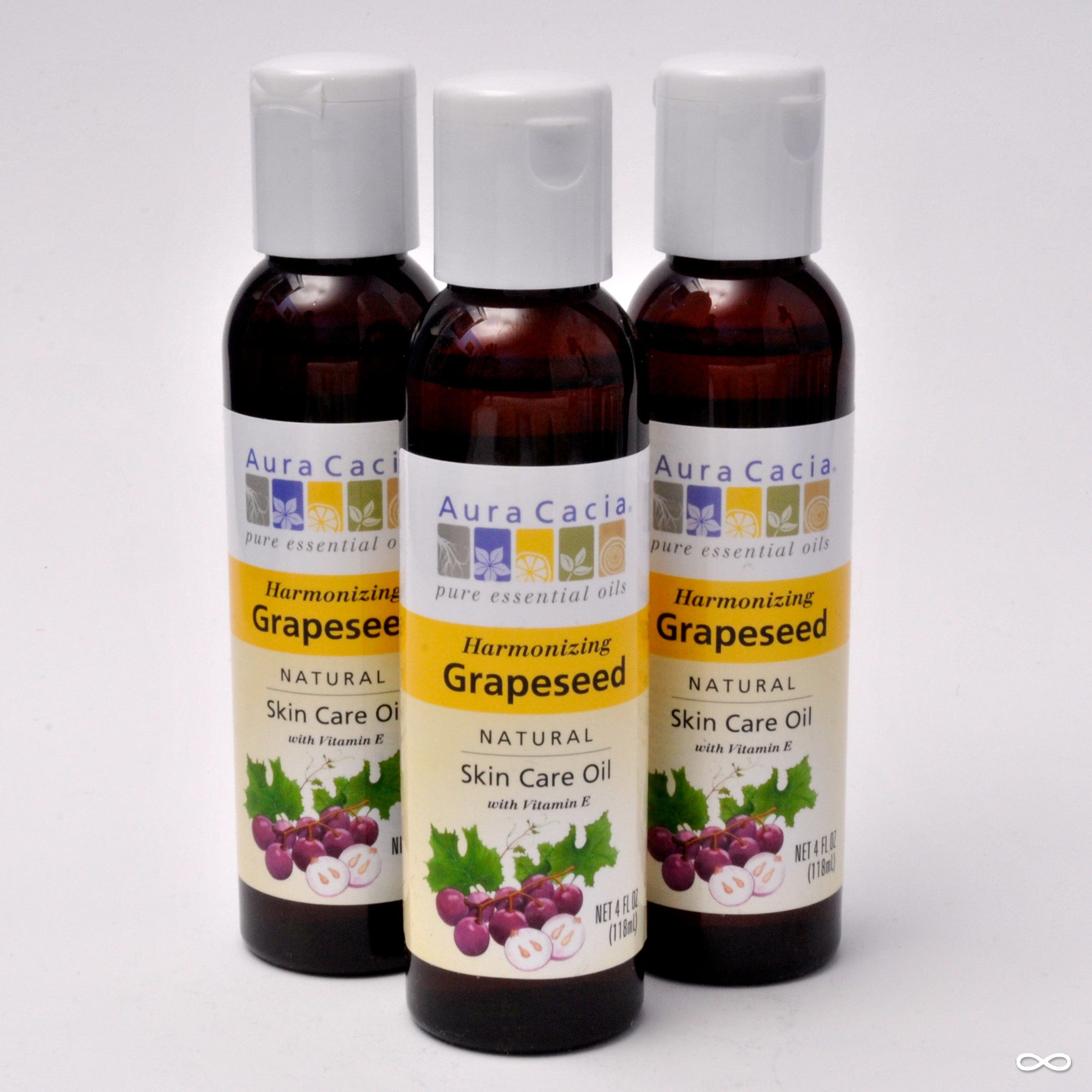What’s the difference between stainless steel and titanium—and which is better for piercings? What’s the difference between surgical steel and implant-grade steel? What your body jewelry is made from is important, and can affect your piercing not only during healing, but after as well. When buying body jewelry, you need to know what you’re paying for, and what works best for what piercing.
Jewelry Materials for Initial Piercings
Initial piercings require jewelry with the best biocompatibility. This means jewelry that will not tarnish or oxidize, and will not react with the skin while your body works hard to heal your piercing. While healed piercings are often more forgiving with what you put in them, fresh piercings are not.
In February of 2009, the Association of Professional Piercers published their revised Minimum Standard for Jewelry for Initial Piercings. This document outlines the minimum in materials, construction, and finish quality for any body jewelry the organization suggests for initial piercings. This list includes specific grades of stainless steel, titanium, high-karat gold, niobium, glass, and select plastic polymers.
Below are explanations of the most commonly used materials for body jewelry.
Stainless Steel
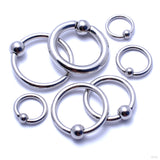 Stainless steel is the most common material used for body jewelry, but there is a lot of confusion about exactly what type is appropriate for body jewelry—and what it’s called. The term surgical stainless steel only describes types of steel used in medical applications. These types of steel are well-suited for making surgical instruments, as they are easy to clean and sterilize, strong, and corrosion-resistant. It does not, however, refer to the alloy’s biocompatibility or suitability for use in the body, for piercings or otherwise.
Stainless steel is the most common material used for body jewelry, but there is a lot of confusion about exactly what type is appropriate for body jewelry—and what it’s called. The term surgical stainless steel only describes types of steel used in medical applications. These types of steel are well-suited for making surgical instruments, as they are easy to clean and sterilize, strong, and corrosion-resistant. It does not, however, refer to the alloy’s biocompatibility or suitability for use in the body, for piercings or otherwise.
Steel suitable for applications such as surgical implants and/or body jewelry is called implant-grade stainless steel. Implant-grade steel has proven biocompatibility as determined by the American Society for Testing and Materials (ASTM) and the International Standards Organization (ISO). Any stainless steel jewelry we sell for initial piercing is ASTM F138 compliant or ISO 5832-1 compliant. How do we know? We receive certification from our manufacturers (that they receive from their suppliers) called mill certifications. These certify that the raw materials used to make the body jewelry sold adheres to standards for biocompatibility, meaning it’s safe to wear in the body.
But wait: isn’t all body jewelry made from implant-grade material? Unfortunately, no. That navel jewelry that you bought on vacation from the beach shop or that tongue jewelry you bought at the mall is most likely not made from implant-grade material. If you can, stick to buying body jewelry from reputable suppliers. That $20 navel post is not a bargain if it gives you a rash the first day wearing it.
Titanium
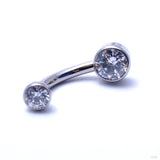 Titanium is a pure element (not an alloy) and is used for various types of body jewelry. Since titanium is naturally nickel-free, it is the perfect alternative for those who have a nickel sensitivity. It can also be anodized different colors without compromising its biocompatibility. And as with our steel pieces, all of the titanium jewelry we sell meets ASTM and ISO standards (ASTM F136 or ISO 5832-3 compliant).
Titanium is a pure element (not an alloy) and is used for various types of body jewelry. Since titanium is naturally nickel-free, it is the perfect alternative for those who have a nickel sensitivity. It can also be anodized different colors without compromising its biocompatibility. And as with our steel pieces, all of the titanium jewelry we sell meets ASTM and ISO standards (ASTM F136 or ISO 5832-3 compliant).
Gold
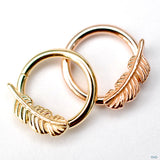 Gold has been used for jewelry since before recorded history. It is a dense, soft, malleable, and ductile metal and it is resistant to oxidation (tarnishing)—making it inert and compatible for use in body piercing jewelry. While pure, 24 karat gold is the least reactive, it is too soft for most jewelry applications. Body jewelry is typically made in either 18 karat (75% gold and 25% other metals) or 14 karat (58% gold).
Gold has been used for jewelry since before recorded history. It is a dense, soft, malleable, and ductile metal and it is resistant to oxidation (tarnishing)—making it inert and compatible for use in body piercing jewelry. While pure, 24 karat gold is the least reactive, it is too soft for most jewelry applications. Body jewelry is typically made in either 18 karat (75% gold and 25% other metals) or 14 karat (58% gold).
The less gold in the jewelry, the stronger it is, but it is also less inert—making your body more likely to react adversely to it. For this reason, we suggest 18 karat jewelry for initial piercings, while healed piercings are usually fine with 14 karat jewelry.
Traditionally, white gold is made with an alloy of gold and nickel to give it the white color. However, in quality body jewelry, palladium is substituted for nickel, as the body can react adversely to nickel in jewelry. All the white gold jewelry we sell at Infinite is made from a nickel-free, palladium alloy.
Niobium
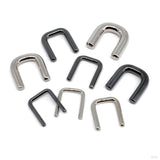 Niobium is an element that, in its natural state, is a muted grey color. It is malleable, inert, hypoallergenic, and can be anodized in different colors (including both glossy and matte black); this makes it extremely useful for body jewelry. And while it’s softness makes it unsuitable for threaded or press-fit bars, it is most often used for captive bead rings.
Niobium is an element that, in its natural state, is a muted grey color. It is malleable, inert, hypoallergenic, and can be anodized in different colors (including both glossy and matte black); this makes it extremely useful for body jewelry. And while it’s softness makes it unsuitable for threaded or press-fit bars, it is most often used for captive bead rings.
Glass
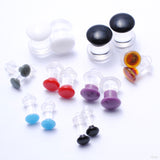 Although glass does not have ASTM specifications regarding biocompatibility, like implant-grade stainless steel or titanium, it is an inert, non-porous, autoclavable material that has a long history of use in body jewelry. (Naturally-occurring glass has been used to make jewelry by cultures all over the world for 3,000 years.) Glass is not only a colorful and affordable option for stretching, it’s also appropriate for initial ear piercings as well—especially for clients who want to start a little thicker than traditional earring posts.
Although glass does not have ASTM specifications regarding biocompatibility, like implant-grade stainless steel or titanium, it is an inert, non-porous, autoclavable material that has a long history of use in body jewelry. (Naturally-occurring glass has been used to make jewelry by cultures all over the world for 3,000 years.) Glass is not only a colorful and affordable option for stretching, it’s also appropriate for initial ear piercings as well—especially for clients who want to start a little thicker than traditional earring posts.
The types of glass most often used for body jewelry are soda-lime or borosilicate, fused quartz, and obsidian. Color selection is usually the reason behind the manufacture of soda-lime or borosilicate, and fused quartz is most often used for retainers because of its strength, clear color, and good biocompatibility characteristics.
For more information about glass as a material for body jewelry, check out the amazing article by Jason Pfohl (owner of Gorilla Glass) in issue #46/47 of The Point: The Journal of the Association of Professional Piercers.
Plastics
Tygon and PTFE are chemically inert and considered biocompatible, and are sometimes used for surface piercings. While useful, at Infinite we tend to keep with metal (or sometimes glass) for initial piercing jewelry. For more information on the use of Tygon and PTFE, check our page on surface piercing FAQs.
Acrylic jewelry may be lightweight, reasonably priced, and come in a wide variety of colors, but it has a much higher risk of producing reactions compared to other jewelry materials. Acrylic jewelry is a cheap alternative to more expensive jewelry, but price is only one part of the equation. In short: stay away from acrylic body jewelry.
Jewelry for Healed Piercings
Healed piercings are often more forgiving than healing piercings, and a wider variety of materials are often used for body jewelry. This doesn’t mean that all the following materials will work for everyone for all piercings, but many of these materials have a long history of use in piercings, despite their less-than-biocompatible nature. Plus, when stretching piercings, especially ear piercings, there comes a time and size when jewelry most commonly used for initial piercings (post or rings) is no longer appropriate, because of size and/or weight. This is when alternative materials are useful.
Silver
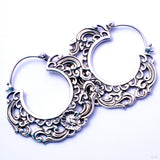 Silver is not usually a good choice for initial piercing jewelry (as it tarnishes easily and can lead to difficulty in healing), but it is usually fine for healed, stretched piercings—and it is available in ornate options that are not possible in machined steel or titanium. What’s more, since silver can be plated with different shades of gold, such as yellow or rose, it is a less expensive than solid gold would be in the same design.
Silver is not usually a good choice for initial piercing jewelry (as it tarnishes easily and can lead to difficulty in healing), but it is usually fine for healed, stretched piercings—and it is available in ornate options that are not possible in machined steel or titanium. What’s more, since silver can be plated with different shades of gold, such as yellow or rose, it is a less expensive than solid gold would be in the same design.
Copper Alloys (Copper, Brass, and Bronze)
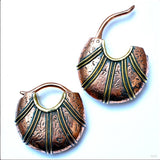 Weights for stretched ears are also traditionally available in copper, brass, or bronze. Over time these materials tarnish, which can produce a beautiful patina on the jewelry but can also produce a reaction for the wearer. For this reason, copper alloy plugs are not recommended and copper alloy jewelry, in general, should be worn for short periods of time only.
Weights for stretched ears are also traditionally available in copper, brass, or bronze. Over time these materials tarnish, which can produce a beautiful patina on the jewelry but can also produce a reaction for the wearer. For this reason, copper alloy plugs are not recommended and copper alloy jewelry, in general, should be worn for short periods of time only.
Silicone
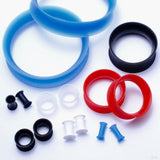 Silicone is a flexible, squishy material which comes in a variety of colors. It is inexpensive and extremely flexible, making it a good choice for stretched piercings where more rigid jewelry can sometimes be uncomfortable, such as enlarged septum piercings, genital piercings, or large-gauge ear piercings when sleeping. Silicone is safe to wear while showering or swimming, and comes in several different “skin tones”—admittedly, this includes a pretty small selection for those with darker skin—that can be used to make your stretched piercing a little more discreet.
Silicone is a flexible, squishy material which comes in a variety of colors. It is inexpensive and extremely flexible, making it a good choice for stretched piercings where more rigid jewelry can sometimes be uncomfortable, such as enlarged septum piercings, genital piercings, or large-gauge ear piercings when sleeping. Silicone is safe to wear while showering or swimming, and comes in several different “skin tones”—admittedly, this includes a pretty small selection for those with darker skin—that can be used to make your stretched piercing a little more discreet.
Despite how easy it may seem to stretch with silicone jewelry, do not stretch your piercings with silicone eyelets, as this almost always leads to problems. Likewise, silicone eyelets should not be used for healing piercings.
Care for silicone eyelets is minimal; simply wash with mild soap and water, but keep in mind small nicks can lead to the jewelry ripping—so don’t throw your silicone plugs in your bag with your keys.
Natural Materials
When people talk about body jewelry made of “natural materials,” they are usually referring to organic materials (of plant or animal origin) in addition to other naturally occurring minerals, such as semi-precious stones or natural obsidian. These materials have different levels of porosity and biocompatibility and require a little more effort and care. It is not recommended to use natural materials for initial piercing jewelry, or to wear in freshly stretched piercings, but for healed, stretched piercings, natural materials can be just what your ears need.
Wood
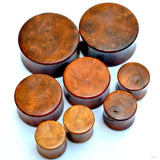
While there is no comprehensive list of what woods are appropriate for use as jewelry, The Point: The Quarterly Journal of the Association of Professional Piercers, issue #40 includes a good article on what woods should not be used.
Bamboo
Though it behaves much like a wood, bamboo is technically a grass. Unlike wood, bamboo is not made-to-size; the outside diameter is simply the thickness of the section of the stalk the jewelry is cut from. This means that its sizing is not usually as exact as with other types of jewelry. Even so, bamboo is an incredibly lightweight, low-cost, wood-like alternative.
Horn, bone, and ivory
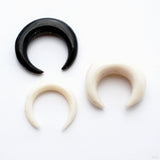 Infinite sells several different materials in this range. Horn is typically black or very dark brown, bone is creamy yellowish-white, and mammoth ivory is, well, ivory-colored. (Ivory differs from bone jewelry in appearance because of its cross-hatched surface patterns). Horn and bone, like wood, should be periodically oiled to seal and prevent cracking, especially in colder, drier climates. Wiping down with a small amount of grapeseed or jojoba oil on a cloth or paper towel will usually do.
Infinite sells several different materials in this range. Horn is typically black or very dark brown, bone is creamy yellowish-white, and mammoth ivory is, well, ivory-colored. (Ivory differs from bone jewelry in appearance because of its cross-hatched surface patterns). Horn and bone, like wood, should be periodically oiled to seal and prevent cracking, especially in colder, drier climates. Wiping down with a small amount of grapeseed or jojoba oil on a cloth or paper towel will usually do.
While sales of elephant ivory are prohibited in many countries by CITES treaties, fossilized mammoth ivory is an acceptable alternative that is often used for jewelry.
Amber

Be aware that most of what is sold as amber body jewelry is actually a plastic resin. If you see amber for sale at around the same price as a piece of acrylic, it is most likely more plastic than amber. To ensure what you are getting is amber and not an amber synthetic hybrid, simply heat a pin and touch it to the jewelry. If the small waft of smoke smells of pine, it’s amber. If it smells like burning plastic, it’s plastic.
Stone
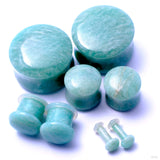 Stone jewelry covers a wide range of materials: from naturally-occurring obsidian to common minerals, like jasper, and semi-precious stones, like amethyst or jade. While some types are okay for stretching (material with a score of five or higher on the Mohs scale, the rating system for mineral hardness and density), not all are.
Stone jewelry covers a wide range of materials: from naturally-occurring obsidian to common minerals, like jasper, and semi-precious stones, like amethyst or jade. While some types are okay for stretching (material with a score of five or higher on the Mohs scale, the rating system for mineral hardness and density), not all are.
Stone jewelry requires minimal maintenance; simply wash it regularly with soap and water. It is also important to check the wearing surface of your stone pieces to ensure they are free of pits, pins holes, or abrasions of any kind, as these can irritate your freshly stretched piercing and may cause additional trauma.
Caring for organic jewelry
Most jewelry made from organic materials requires special care. Unlike metal or glass jewelry, organic materials are semi-porous and sensitive to moisture. If possible, take your jewelry out when you shower or swim, and wipe it off if you’ve been sweating. The organic jewelry that Infinite sells hasn’t been treated with any kind of synthetic varnish or sealant. This means that it needs some form of oil or wax to keep it from drying out completely, which can cause cracking. If you wear your jewelry regularly, the oils from your skin may be enough to keep it in good shape, but if your jewelry loses its luster, it usually means it needs oil or wax. You’ll also want to oil jewelry before you wear it for the first time, when you haven’t worn it in a while, or if the weather is unusually dry or cold.
When selecting an appropriate oil for wood jewelry, stay away from most edible, food-grade oils, like vegetable or olive oil, as these can go rancid in your piercing. Grapeseed oil is great, and jojoba oil will work as well—although some people do discover they have a sensitivity to jojoba oil. You can also use beeswax on wood or bone plugs to make them somewhat water-resistant and seal up tiny cracks. To use, break off a small piece from a beeswax block (available at craft stores) and roll it between your fingers to warm it up. Rub it into your jewelry, brushing off any excess. But like jojoba oil, some people will experience they have a sensitivity to beeswax, especially if they have pollen allergies. In short, use whatever works best for you and your body.
